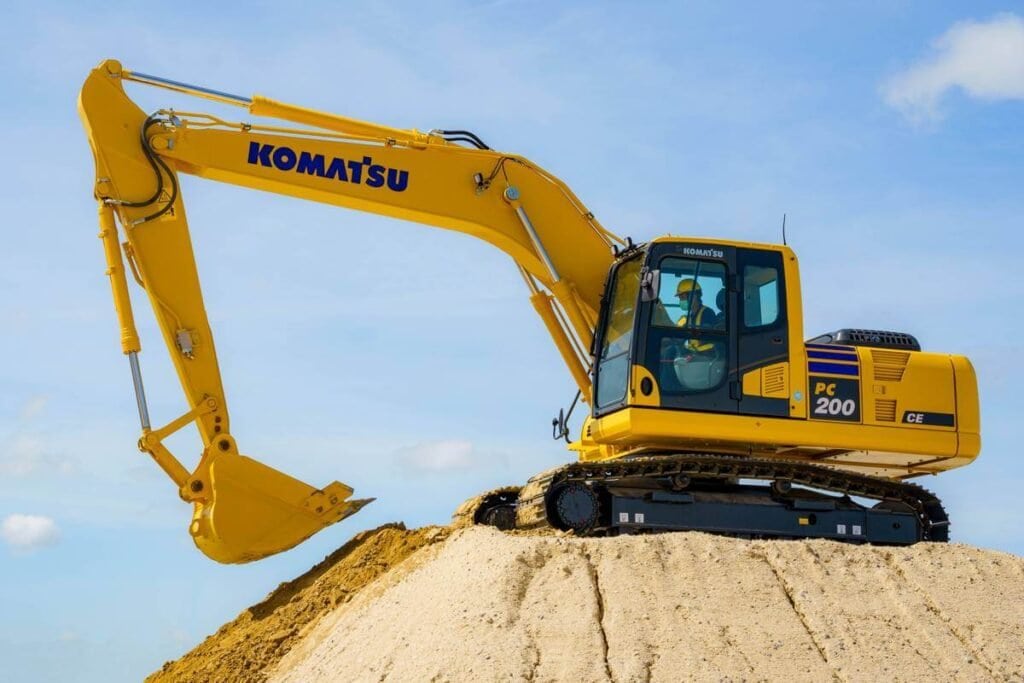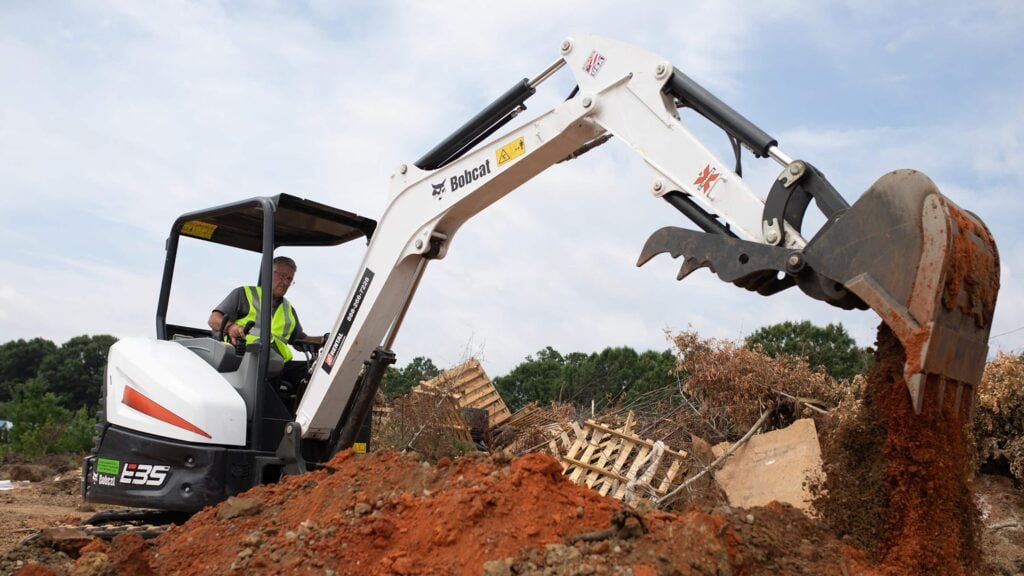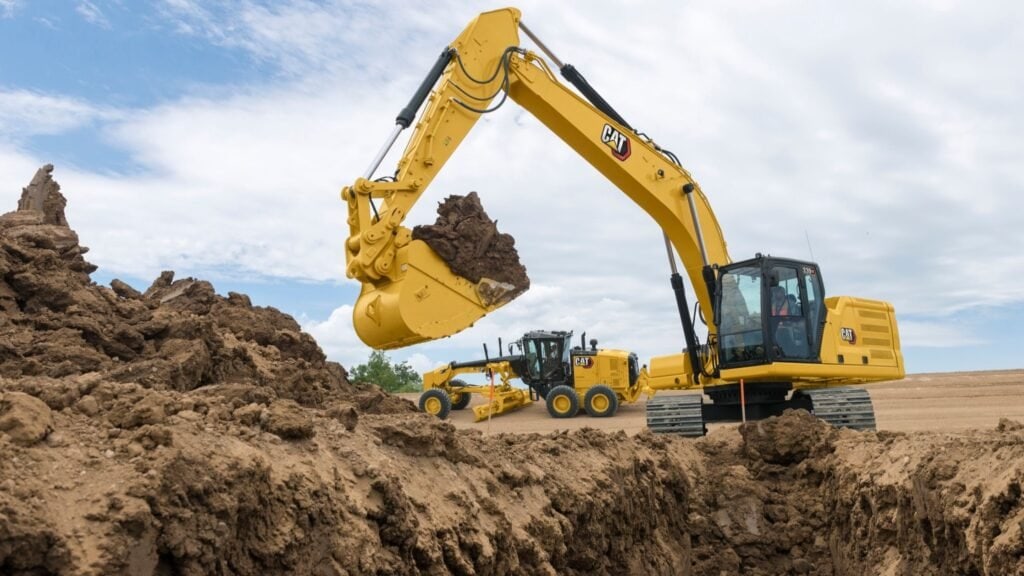Not sure where to start with how to operate excavator? It’s easy to master, do it safely, and achieve professional results … even if you’re just getting started.
To operate an escavadora correctly, begin with control orientation, machine preparation, safe movement techniques, terrain adaptation, and regular maintenance. Whether using a mini excavator, a CAT 320 excavator, or a Komatsu excavator, this guide will help you work efficiently and reduce operational risks.
Let me walk you through the step-by-step process of operating an excavator like a pro.

What Are The Main Parts And Controls Of An Excavator?
The number one key to running an excavator like a pro is to know where all the controls are and what each one does. An excavator has a few primary control mechanisms, including joysticks for where you want the boom and arm to go, foot pedals to direct your tracks, a throttle to give you more or less engine power, and switches to control the mode the machine is in.
Understanding the interface of the different types of excavators— from a Cat excavator to a Volvo excavator, or a Sany excavator—is critical to you. The track controls on an excavator actually make the machine move through different terrains. The right-stick control is for the arm and the bucket; the left-stick control is for the swing and the boom. The more you use it and understand the interface of each, the better and safer you’ll be.
Most modern models, such as the Cat 308 excavator or komatsu excavator, have digital panels that you can use to monitor your hydraulic settings, see how much fuel is in the machine, and so on.
How To Start And Prepare The Excavator Before Use?
Perform pre-start checks to make sure you’re going to be safe and you’ll have a good day on your excavator. Check fluid levels such as your engine oil, your engine coolant, and your hydraulic fluid. Check around for leaks, check your undercarriage for any damage, and clear your work area. Once you’ve done that, make sure the controls are neutral, climb up in the cab, fasten your seatbelt, turn the key, and let the machine idle for a few minutes.
Different models, such as a Escavadeira Cat 330 for sale or a Kubota mini excavator, might have a slightly different procedure for starting them up, but their principles are the same. Check around, make sure everything is good to go, and check on the condition of the machine before you start working it out. Nothing can halt your progress in your excavator training faster than if your excavator has a mechanical failure.

How To Perform Basic Excavator Operations?
The core of learning to drive an excavator lies in mastering its basic movements—swinging, digging, and lifting.
- To dig: lower the boom using the joystick, extend the arm forward, and curl the bucket inward.
- For dumping: swing the cab, raise the boom, and uncurl the bucket.
These operations should be practiced in a safe, open area, ideally under supervision.
Even with a small mini digger, you can still do some damage if you don’t know what you’re doing. Take it slow and build your confidence and expertise over time. Work with excavator rental units before you buy one so you can get a feel for it. If you’re looking at a Cat 315 for sale or you’re wanting to rent a Cat 390 long reach, you need to understand the difference in reach and the way that the bucket works with each of those models.
How To Work Safely On Different Terrains?
Working across different terrains can be one of the more challenging things that you do with your excavator. It requires you to be aware at all times and to exercise your technical expertise. On flat ground, keep the boom low and be careful as you drive. If you’re on a slope, always climb up and down the slope instead of driving side to side in case you tip over. If you’re working in mud or rocks, be careful not to get stuck in the mud or high center yourself on some boulders.
Consult an excavator size guide if you need to. How big of an excavator do you need and what type of terrain are you working in? Full-size and long-reach excavators are great for some jobs, but if you’re working in a tight urban area, a 13 tonne excavator may be too much. Maybe a Mini escavadeira for sale would fit your needs in a smaller area like that. Whether you use a case excavator or a Cat 390F, make sure that you adjust how you run your machine based on the type of ground you’re working on around you.

What Are The Common Mistakes New Operators Should Avoid?
It’s easy to make some mistakes as a new operator, but with a little time spent recognizing and avoiding these common error areas, you’re going to save yourself some downtime and potential repair bills down the road.
Common problems include overextending with the boom, making jerky movements with the joysticks, forgetting to check your blind spots, and not doing a proper walk-around before you start your machine. The biggest mistake you can make, though, is picking up something and not having your bucket centered about your tracks.
During trackhoe training, they were adamant about being smooth and consistent in all of their movements. Whether you were renting a trackhoe, test driving a track hoe, or checking out a Cat 308d for sale, they didn’t want you jerking your controls all over the place and overworking the machine. Allow yourself to learn. Get as much classroom, video, or virtual training as you can, along with your practical training, to gain confidence as a trackhoe operator.
How To Maintain And Inspect Excavators Regularly?
Proper maintenance is going to make that machine last longer, run better, and be safer for you in the long run. Daily, you’re checking all of your fluids, looking for visible leaks. You’re doing a visual inspection of that undercarriage. Weekly or monthly, you’re looking at bolts and pins. When was the last time you checked your filters? When you have worn-out teeth on your bucket, and it’s making your Cat 308D for sale look a little bit under the weather, what do you think that’s doing to your precision?
Maintaining maintenance logs, following OEM guidelines (like cat 323F price service intervals), and keeping a clean machine is going to extend the life of your equipment. Whether you’re dealing with a Cat 320f price range machine or just a basic construction digger, doing this stuff is going to save you money in the long run.

Can Beginners Learn To Operate An Excavator Easily?
Yes—learning to drive an excavator is possible for beginners with the right support.
Access to simulators, manuals, and guided practice can help shorten the learning curve. Most beginners get the basics down in a week or so. Using models like a Mini escavadeira, temu excavator, or compact excavator mini can also help make it less intimidating.
Today, many training facilities offer beginner’s courses for operating an excavator. It’s not just for people whose job it is to operate one. Even professionals in sales or logistics, who buy used excavators to resell, find it beneficial to know how to operate them.
Is It Easy To Operate A Small Excavator?
Absolutely—small excavators are perfect for beginners because the controls are simplified, and they have lower horsepower. The smallest mini digger, Kubota mini excavator, or compact Sany excavator, is popular for landscaping, urban construction, and agricultural uses because they are versatile, and they are easier to transport and maintain.
However, you still need to follow safety procedures and understand how the terrain is going to react. Just because it’s a small machine doesn’t mean it’s without risk. You can still tip it. You can still run into things. The best way to not do that is with some hands-on practice and some guided training on running an excavator.

Is An Excavator Manual Or Automatic?
Most of them are manually controlled, although some of the newer models have semi-automatic features.
The primary driving and digging control does rely on manual joystick movements. But, they’re incorporating more semi-automatic features, such as idle settings, automatic shutoff to save fuel, and GPS grade control to improve digging accuracy. Cat excavator models such as the Cat 390F or Cat 320F include advanced assistive technologies.
Knowing how to switch back and forth between manual and semi-automatic operation is key to getting the most out of the excavator you are renting or buying, especially the more advanced models you can find on cat excavator sale sites or excavator for sale listings.
How Long Does It Take To Learn To Operate An Excavator?
It depends on the person, but I would say within a week, definitely within 1–2 weeks. We’re talking about the basics here.
There may be a formal, structured training program that might take a couple of days or even up to a month to go through all the theory and hands-on exercises. With practice, anybody can get good at stuff like trenching, leveling, and precision dumping.
If you’re looking at buying a used excavator, going through a certified program will help you to assess equipment like a Cat 315 for sale, understand Cat excavator variations and how to assess an excavator price, and you’ll know what to negotiate based on the condition and operation.

What Is The Correct Position For Parking An Excavator?
Always park it on level ground, put the bucket flat on the ground, retract the arm and the boom all the way, put any attachments down, whatever you’ve got, put them down. Engage your safety lock and put the hydraulic lever in its neutral position. Then, and only then, once all the moving parts stop, you can shut down the engine.
Whether you’re running a track hoe rental, a Cat 390 long reach, or any other model, that’s how you park the thing. It will save it from wear and tear, it might save an accident, and you’ll be ready for your next job.
Resumo
Professional excavator operation involves proper training, consistent practice, and routine maintenance—vital whether you’re a beginner or seasoned excavator operator.